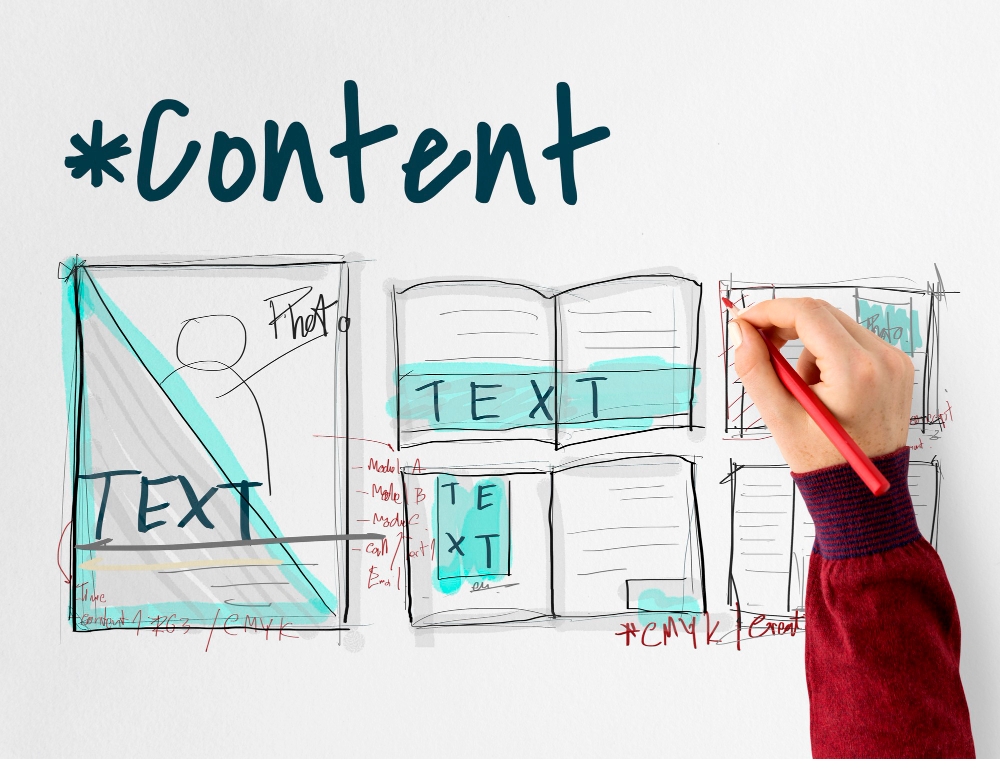
Content Marketing for B2B: A Comprehensive Guide for Companies
In today’s digital age, creating and distributing valuable content is crucial for businesses looking to establish themselves as industry leaders and attract new customers. But for B2B companies, the stakes are even higher! With complex sales processes and a target audience made up of other business owners, content marketing for B2B can be challenging, and many may need help knowing how to begin.
Not to worry, though, as we are here just because of you. So strap in, and get ready to be mind-blown as we explore the most cutting-edge and innovative ways to grow your B2B company through content marketing.
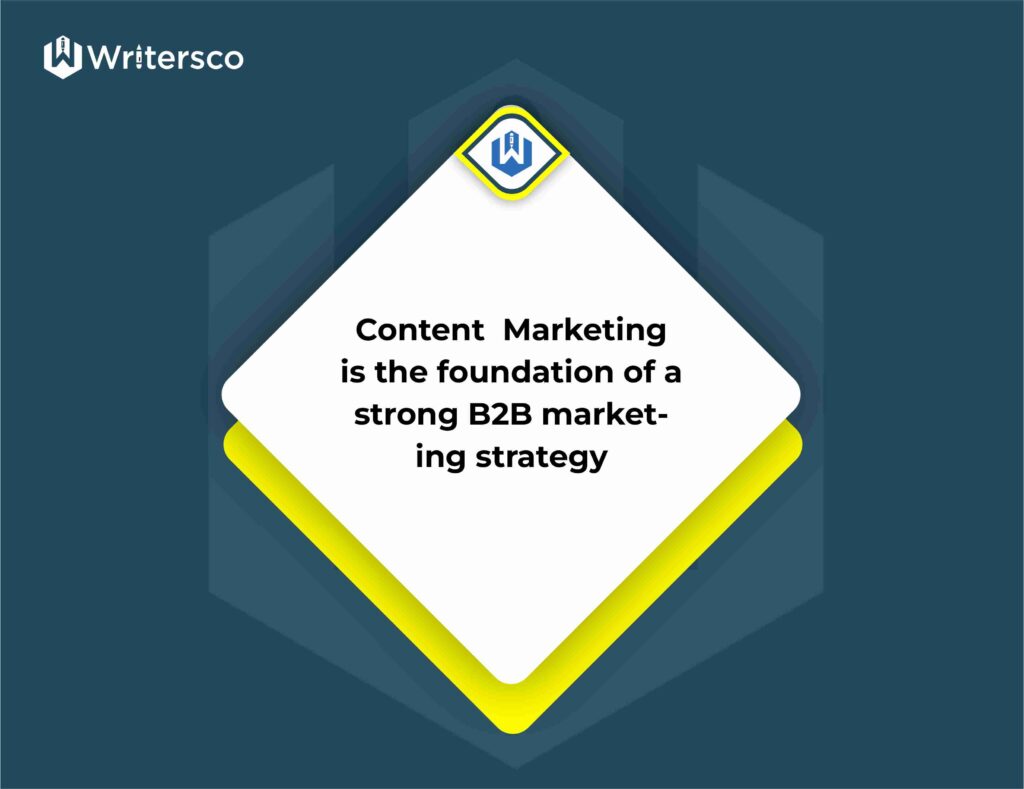
What is Content Marketing?
The average business owner of this age has an idea of what content marketing is, albeit little. There is data to prove this, with Hubspot revealing that 82% of marketers are invested in using content marketing to promote their business. The truth is content marketing is the foundation of a strong B2B marketing strategy, and this is why we consider it important that every B2B company owner or marketer fully understands it.
Neil Patel defines content marketing as “a long-term strategy that focuses on building a strong relationship with your target audience by giving high-quality content that is very relevant to them on a consistent basis.”
In other words, content marketing is a strategic approach for creating and distributing valuable, relevant, and cohesive content to attract and engage a specific target audience and ultimately drive profitable customer action. While product promotion can be achieved through content marketing, it is not always the primary goal. The sole aim of content marketing is to educate and inform the target audience. This drives the audience to trust and become emotionally attached to the content providers to the point where they purchase their product or service.
One of our previous posts is a compilation of top content marketing definitions. You should check it out for a thorough understanding of the concept.
What is Content Marketing for B2B and How Does it Work?
Having understood the basics of content marketing, B2B content marketing would refer to a strategy or set of strategies that focus on helping you deliver valuable content to your target audience to engage them, generate new leads, and retain previous customers. In this case, however, your target audience would be businesses that require your products and services. This is the major distinguishing factor between content marketing strategies for B2B brands and those for B2C brands.
How does B2B Content Marketing Differ from B2C? (B2B Content Marketing vs B2C Content Marketing)
As a B2B company, your approach would be slightly, if not broadly different since your target audience is also distinctly different. While you aim to engage and create an emotional bond with your audience, you also want to show top-notch expertise that would make another company trust you.
B2C brands may focus more on entertainment and trendy news in their content marketing strategies. On the other hand, you would want to focus more on informing, inspiring, and reassuring your audience while equally engaging them. You also want to ensure that you put out content where your target audience can find them. For example, you’ve got to consider if Instagram would really be a more suitable platform than YouTube to deliver your content. You can also ask yourself if focusing on Reddit or Quora is a good approach or if using a blog is more worth it.
To instill the trust of your target audience in you, you must get them to be able to empathize with you, and this involves doing a lot of things – giving behind-the-scenes content, talking about the technical side of what you do, sharing information that will help your target audience succeed at their businesses, and presenting numbers that prove your success and expertise at what you’ve been doing.
Your target audience will likely not be interested in taking things too slow with you. They want to see facts and want to be able to read your expertise from the first minute of interacting with your content. These are key details that influence the content marketing approach of B2B brands.
Content Options for B2B Content Marketing

Your buyer’s journey with you starts with valuable, informative content, which you are saddled with the responsibility of providing. The good thing is there are several ways you can create this content for your audience. While you may have favorites, you should always be encouraged to try new content methods, especially if they have reported a track record of getting the marketing job done. This article outlines the top content formats you should jump on for effective B2B content marketing.
#1. Blog Posts
We did not outline blogging because it is the “cliché” format for delivering content. Owning a blog will do any company a lot of benefits, B2B or otherwise. Not only does a blog remain a primary source of content distribution, but it also provides excellent SEO benefits and can help you get more visibility for your website.
As you strive to engage your audience with your work ethics, share testimonials from previous clients, and talk about what inspires you, you can leverage your blog to share key informative content that your audience would need.
#2. Videos
As a B2B brand, videos can help you better deliver content for explaining how your products or services work, answering client questions, revealing what happens behind the scenes, reviewing products, and doing a lot of other things that prove your expertise in a way that blog posts cannot.
#3. Podcasts
With audio streaming platforms rapidly increasing in popularity, podcasts can be a great way to deliver content to your target audience. This particularly works if they may not be the type to sit with blog posts or watch YouTube videos.
And there is also this little trick: having a podcast series dignifies anyone and shows that they have something others don’t have, which can be great for your brand.
#4. Infographics
Infographics are a quick way to share volumes of information, especially facts, figures, trends, product comparisons, and other helpful content for your customers. You can make your infographics catchy and engaging by relying on the right visual elements.
#5. Whitepapers
Whitepapers are your perfect content for explaining in detail how a product, service, feature, or concept works. They provide just the precise amount of information that B2B audiences look out for, and there are many ways to utilize them. These include providing information, generating leads, inciting business collaborations, and a strategy for generating sales.
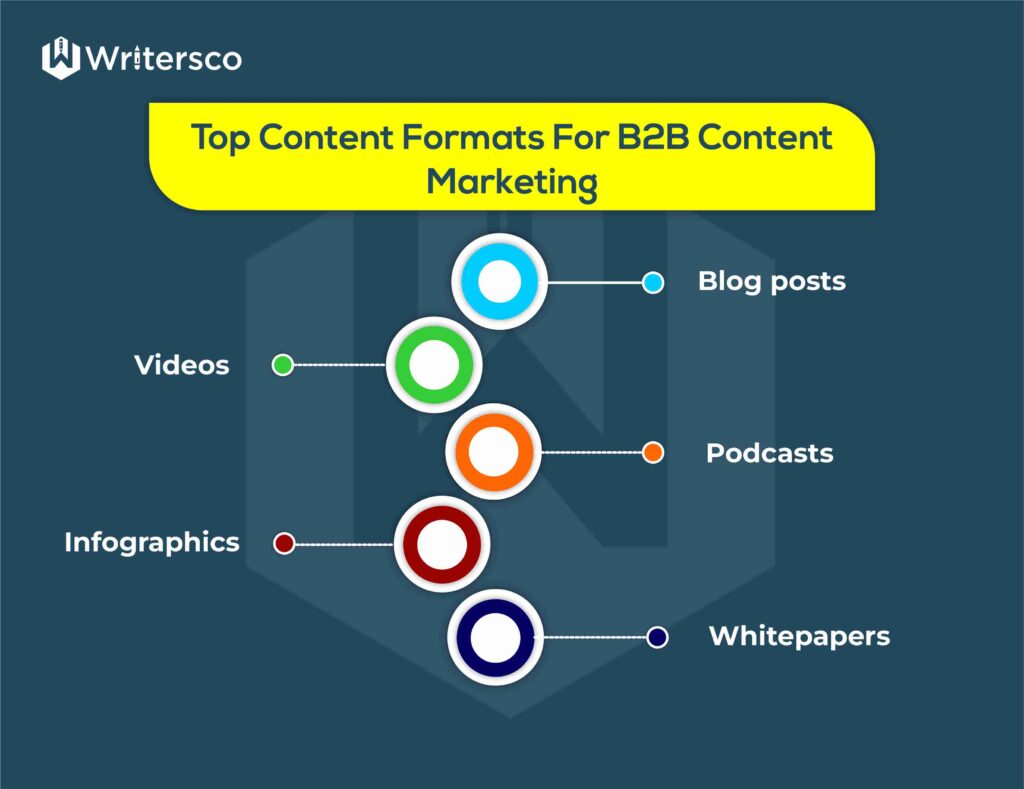
B2B Content Marketing Best Practices and Strategies to Incorporate
Utilizing content marketing is one thing; using it the right way is another. While no one can get it all, there are some content marketing practices you must consistently incorporate if you must achieve desirable results.
Have a Content Marketing Strategy
Did you know statistics reveal that 60% of most B2B marketers have a documented content marketing strategy? If anything, this means having a content marketing strategy is essential to your marketing success. And there are really no tricks to this. Planning a strategy lets you take an in-depth look into your company so you can identify areas that you should be focused on. Besides, documenting your strategy gives you something you can always refer to, thereby keeping you focused on your goals and ensuring you achieve the best outcomes from content marketing.
Your content strategy should outline the types of content you’ll create, the channels you’ll use to distribute it, and the goals you hope to achieve.
Focus on Creating Quality Content that Provides Value
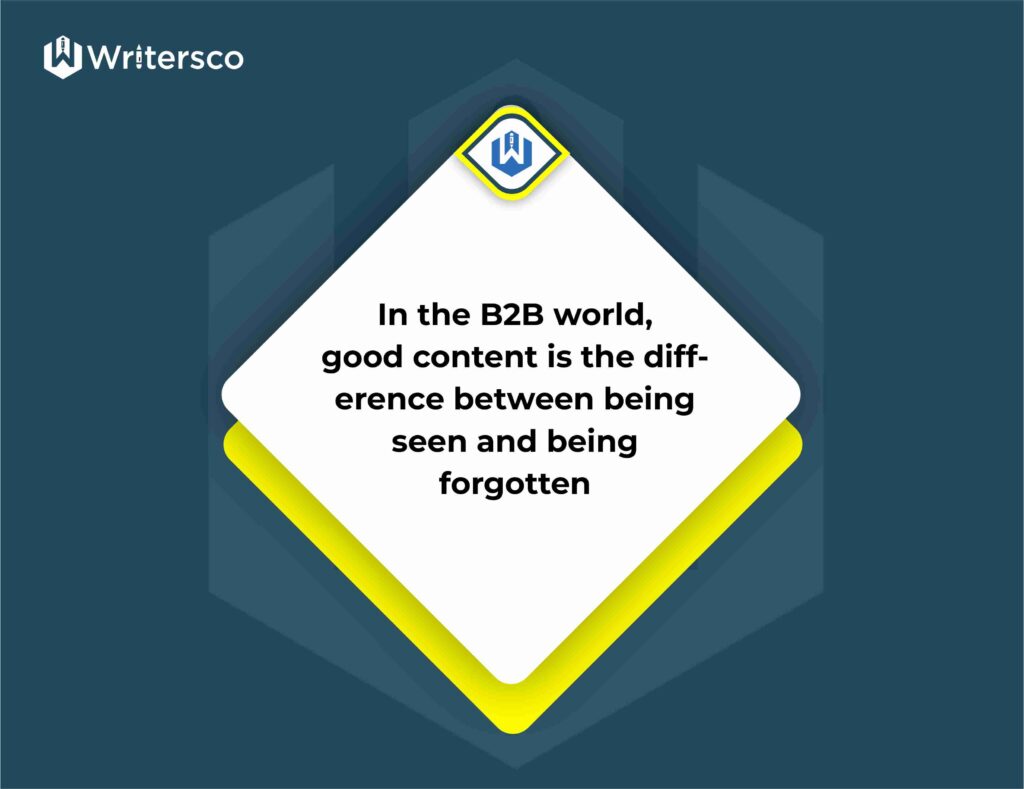
Great content is the foundation of a strong content marketing strategy. This is not a far-fetched point since the idea of content marketing is all about the content you create. Effective content marketing for B2B requires that companies be even more intentional about their content if they want to see a significant return on investment. Let’s put it for you in another way: In the B2B world, good content is the difference between being seen and being forgotten.
If your content will make any impact on classified audiences like the type you serve, then it must be of top-notch quality with enough information and value to answer audience questions, solve problems, and address pain points your clients may encounter while using your product or service.
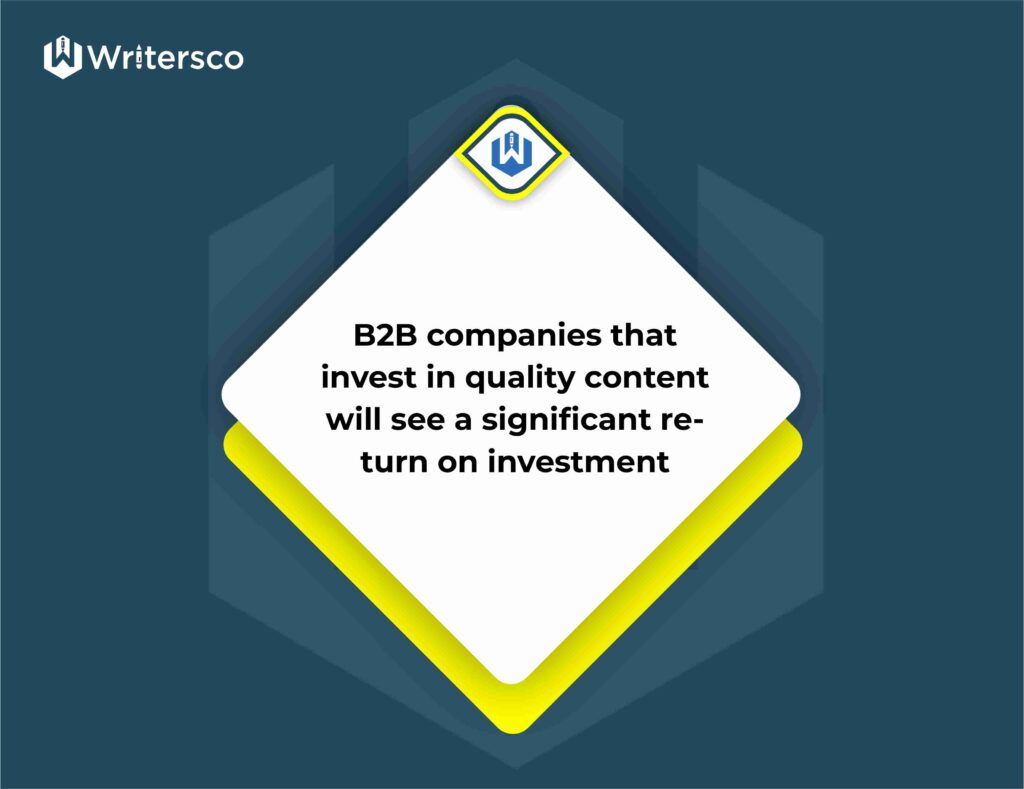
Use a Variety of Content Formats but Have a Cohesive System for Distributing Content
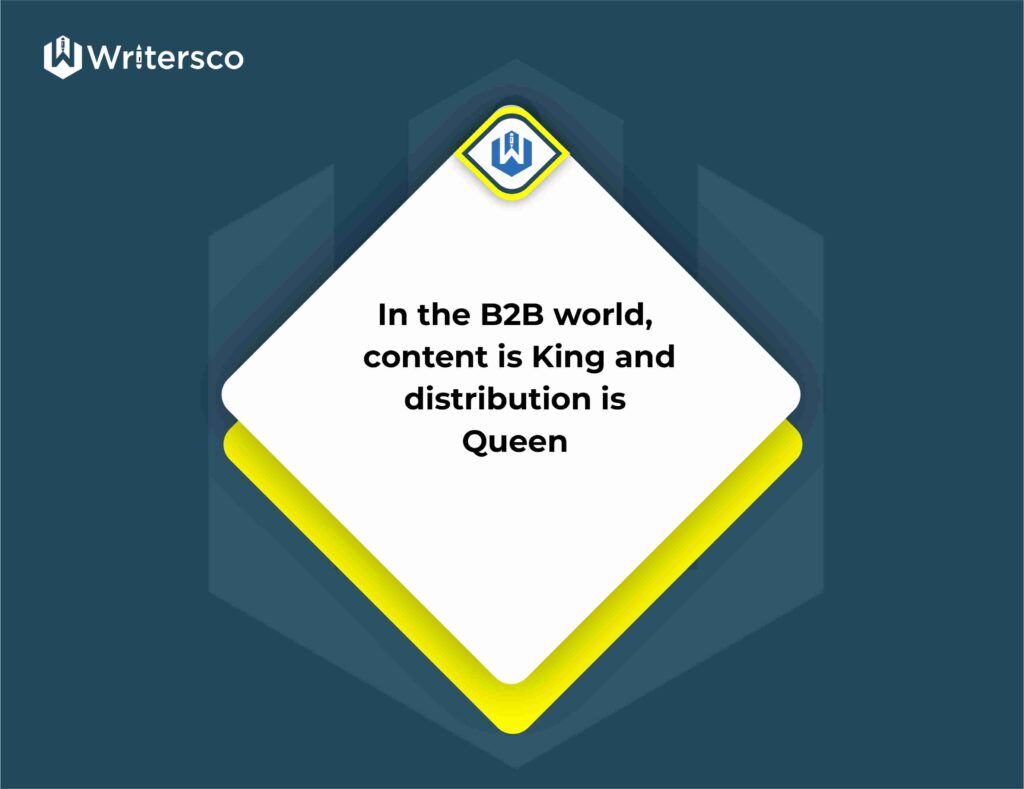
Rather than focus on one content format or content-sharing platform, mix up your content formats to keep things interesting and cater to different learning styles. Content marketing for B2B companies implies taking things a step further than what B2C companies would do. You should, therefore, strongly consider creating content using as many formats as possible – blog posts, white papers, e-books, case studies, webinars, infographics, podcasts, and many others.
Another thing repurposing content does for you is that it helps you always have content to provide. Since most of the information you provide your audience will remain relevant for years to come, it makes plenty of sense to repurpose them. You could turn a blog post into an infographic or short video content. You can then share this on your social media platforms and refer your audience to the more comprehensive blog post if they would love to learn more.
Because in the B2B world, content is King and distribution is Queen, how you distribute your content is important as it determines if it gets seen at all. Why should only a hundred people come across your content when millions can actually view it? Here is what you should do: when you create content in different formats, put them out on all platforms possible – YouTube, blog posts, LinkedIn, Instagram reels – as many platforms as you can lay your hands on. Creating such a cohesive system for distributing your content ensures that it gets the widest reach possible.
Do Not Underplay Surveys, Research, and Fact Sheets
B2B transaction procedures take up a more serious tone when compared to B2C. Your clients are going to be more intentional with you as they strive to ensure none of their penny spent goes to waste. An excellent way to prove you are the serious one and the top fit for the job is to provide your client with high-quality facts about what you do, your product, or other related processes.
Now, this may be a hard path to tread with tending to shy away from collecting facts and presenting them. However, going that extra mile to create content that contains facts and figures might be all you need to bring credibility to your company. Besides, being a credible supply of facts has additional benefits for you. It can help your website rank better as other sites consistently begin to source from and link to the data you provide.
You even become more credible if your company focuses on a line of research that has never been explored and provides firsthand facts and figures. An excellent way to do this is by conducting surveys with your clients or analyzing customer trends and other market data you have amassed over time.
We have already outlined content ideas you can use to present your findings to your clients. These include whitepapers, downloadable fact sheets, blog posts, infographics, and videos.
So here’s it: collect facts, promote them by putting them in the face of your clients and others who might need them, and let the magic be done for you! Actually, it’s really no magic.
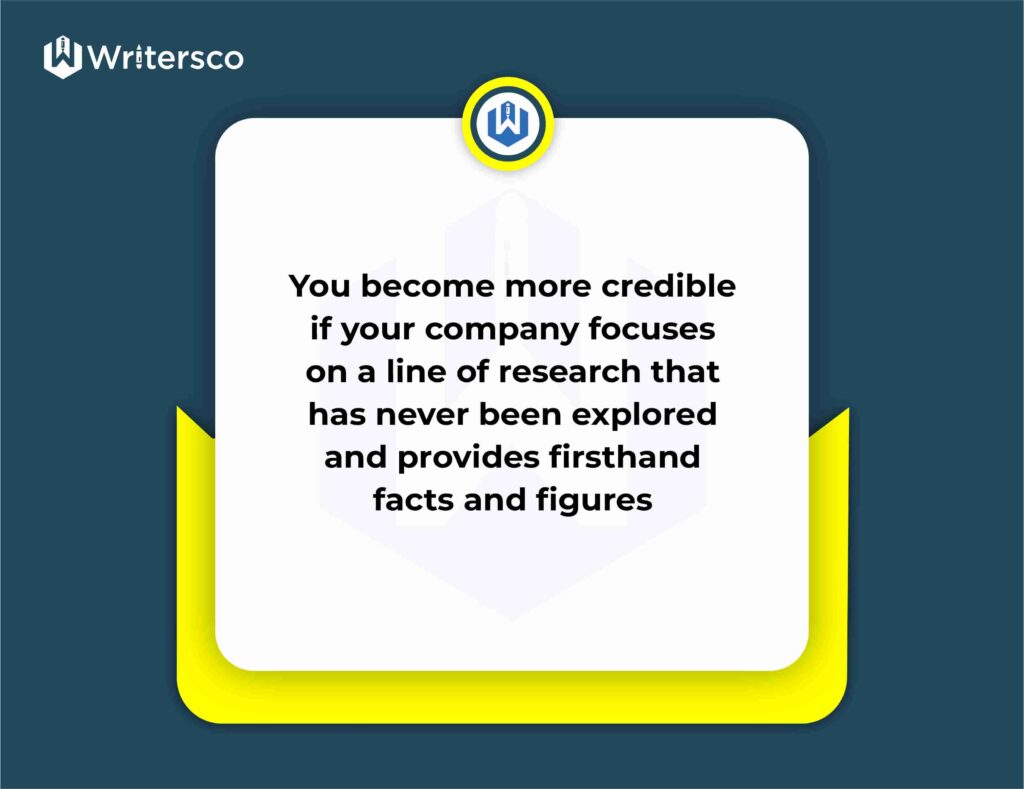
Measure and Adjust Your Strategy
As a B2B utilizing content marketing, measuring and tracking your results should be a priority. When you track your results, you are able to identify what works and what doesn’t, what should be improved, what should be discarded, what should be repurposed, and what should be introduced.
Mind you, what works tends to change over time. This is particularly true for content marketing, where trends and audience preferences can change quickly. Sometimes, it is only as you track your results that you are able to notice the decline in engagement and make necessary changes.
Conclusion
Content marketing is a powerful tool for B2B companies looking to establish themselves as industry leaders and attract new customers. Content remains King always, and by creating and distributing valuable content that speaks to your target audience, you can build trust, establish authority, and generate leads. With the right content marketing strategy, you can achieve even more with your marketing efforts. What else can we say? We believe in you, and we know you’ve got this. Happy marketing!




